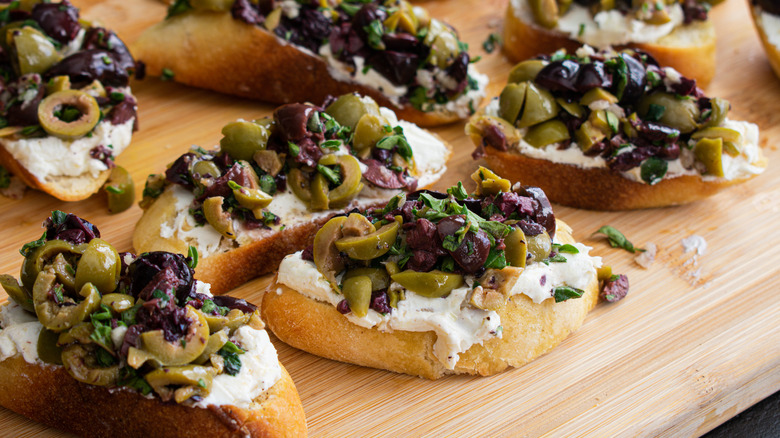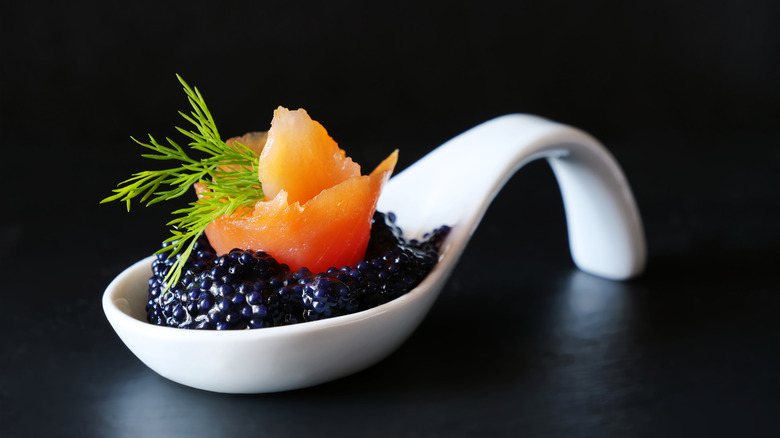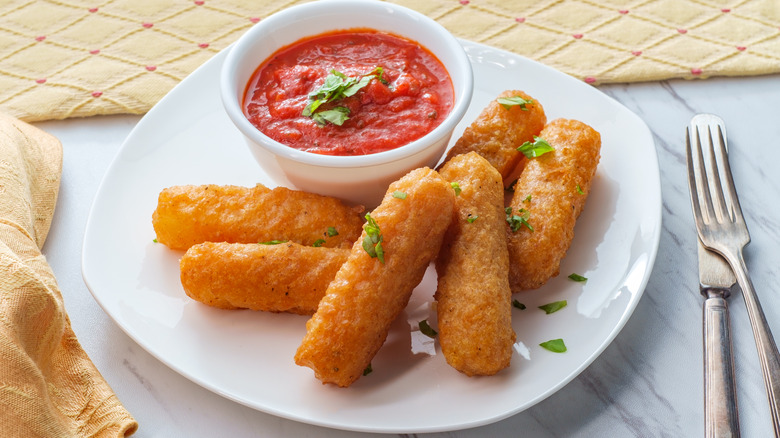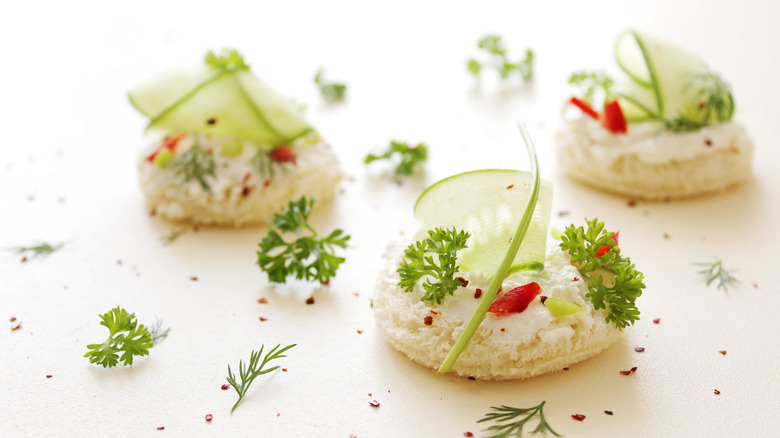What Separates Amuse Bouche From Appetizers And Hors D'oeuvres?
Little bites of food, whether served casually on a buffet table or on a platter carried by a waiter, bring small moments of joy to your taste buds as you wait for dinner to start. Called amuse-bouche, appetizers, and hors d'oeuvres, these bite-size food items are not short on flavor and are presented in a similar fashion — but their origins differ. In modern times, however, the terms amuse-bouche, appetizers, and hors d'oeuvres are often used interchangeably.
While traditionally served before dinner, you can also throw a small bites-only get-together, which can include make-ahead appetizers and other tasty bits of food that can be enjoyed either standing or sitting while socializing. For the best spread, consider including a healthy appetizer focusing on fruits or vegetables, a dip or spread, a protein-forward bite such as a meatball, and a hearty, starchy appetizer. As to be expected, the type and quantity of amuse-bouche, appetizers, or hors d'oeuvres prepped for a party should depend on the guests.
Food to amuse the mouth
A combination of French words, amuse-bouche can be translated to mean "mouth amuser" and are composed of small bites of food that are enjoyed before the main course. Smaller than an appetizer and served in a more formal setting than the appetizer, an amuse bouche is intended to prepare the palate for a more filling and delicious dinner. By definition, an amuse bouche should be consumable in one bite or two, and while they might have a fanciness, amuse bouche should also be fun.
These complimentary starters are also a vehicle to show off a chef's knife skills and creativity. Three aspects should be part of an amuse bouche, per MasterClass: simplicity, ease, and cleverness. Some examples of an amuse-bouche include a gazpacho shooter, a ceviche spoon, broth, mousse, or Belgian endives with cheese and compote.
Amuse-bouche was first served by French chefs who wanted guests to truly taste and enjoy fresh produce, versus covering it with a sauce, says Michelin Guide. They continue to be served by chefs in fine-dining restaurants. A studay has even shown that by eating an amuse bouche with a bold flavor, the diner's appetite may increase, according to Michelin.
Food to increase the appetite
An appetizer can be a food or beverage that is intended to increase a person's appetite as they wait for the main meal to be served. Traditionally, appetizers were served as a first course of a larger meal; although, their consumption has become more casual in modern times.
Classic U.S. restaurant appetizers like mozzarella sticks, spinach and artichoke dip, and chips and salsa, might first come to mind. Other appetizers also make the rounds at family get-togethers like deviled eggs and taco dip. On the other hand, elevated appetizers like beef tartare are ideal for dinner hosts looking to try something new.
Appetizers go back to the days of ancient Greece and Rome when they often included pieces of vegetables, fruits, baked fish, meat, and cheese. The wealthy members of French society continued to offer appetizers to their guests during the 18th and 19th centuries. Remaining small bites of food in modern times, appetizers are intended to be full of flavor that should be paired with the alcohol being served.
Food while you wait
Also originating with the French, hors d'oeuvres (pronounced "or-DERVS") can be translated to "outside the work." This refers to how restaurant workers at one time would serve small bites of food to guests as they waited for their main meal to be made. Hors d'oeuvres are also intended to stimulate a person's appetite as they wait. Hors d'oeuvres are now found outside of restaurants but are still generally considered to be small or bite-sized, visually attractive, and should be complementary to the rest of the menu. Another rule of thumb for hors d'oeuvres is they should be eaten by hand.
When it comes to hors d'oeuvres at a party, one-bite appetizers can be passed or set out on a platter for guests to help themselves. A host should plan on offering three to four types of hors d'oeuvres to their guests. A collection of hors d'oeuvres recipes can include cheese-stuffed pastry puff, brie appetizers with bacon, and an eggplant crostini recipe.
No matter whether you choose to call them amuse-bouche, appetizers, or hors d'oeuvres, these little bites are sure to delight the taste buds.



